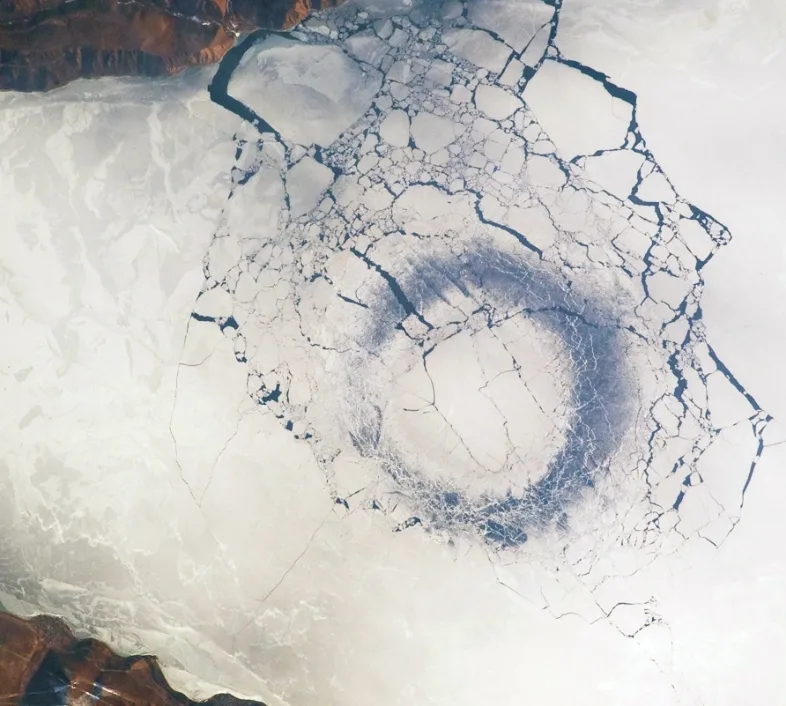
Mysterious ice rings form on the world's deepest lake
These frozen 'crop circles’ floating on the oldest lake on Earth prompted an international team of researchers to investigate this mystery.
Mysterious ice rings have been forming on Lake Baikal in Siberia since at least the 1960s and it has taken scientists decades to figure out how these bizarre formations are created. The lake itself draws significant attention as it has a maximum depth of 1,642 metres and is considered to be the oldest lake in the world since it developed 25 to 30 million years ago.
The massive rings can stretch up to 7 km in length and can be seen from satellites in space. Some say the ice rings that form during the winter look like crop circles while others think that methane gas bubbling up from the bottom of the lake helped them form.

An ice ring on Lake Baikal in Siberia. Credit: NASA Earth Observatory
A team of researchers from France, Russia and Mongolia made several trips to this lake in 2016 and 2017 to investigate the ice ring mystery and published their findings in a recent study. Senors that were dropped into the lake reveal that the movement of warm eddies deep in the lake flow clockwise underneath the thin top layer of ice, which causes the ice to form in the shape of a ring. Eddies are circular movements of water within the lake and the senors found that the water did not flow as quickly at the center of the eddies, which is why a circular sheet of ice remains on the surface.
Lake Baikal is over 600 km long and only 79 km wide, so many choose to drive across it during the winter months. The ice rings are dangerous for motorists that travel across the lake because they are thinner than the rest of the ice that surrounds them. Even the researchers struggled to cross the ice rings and nearly lost two of their vans - one was recovered the following day while the other sank to the bottom of the lake.
The ice rings can be hard to see at ground level, so the researchers have created a website to provide safety tips and continuous updates about the location of the ice rings.











